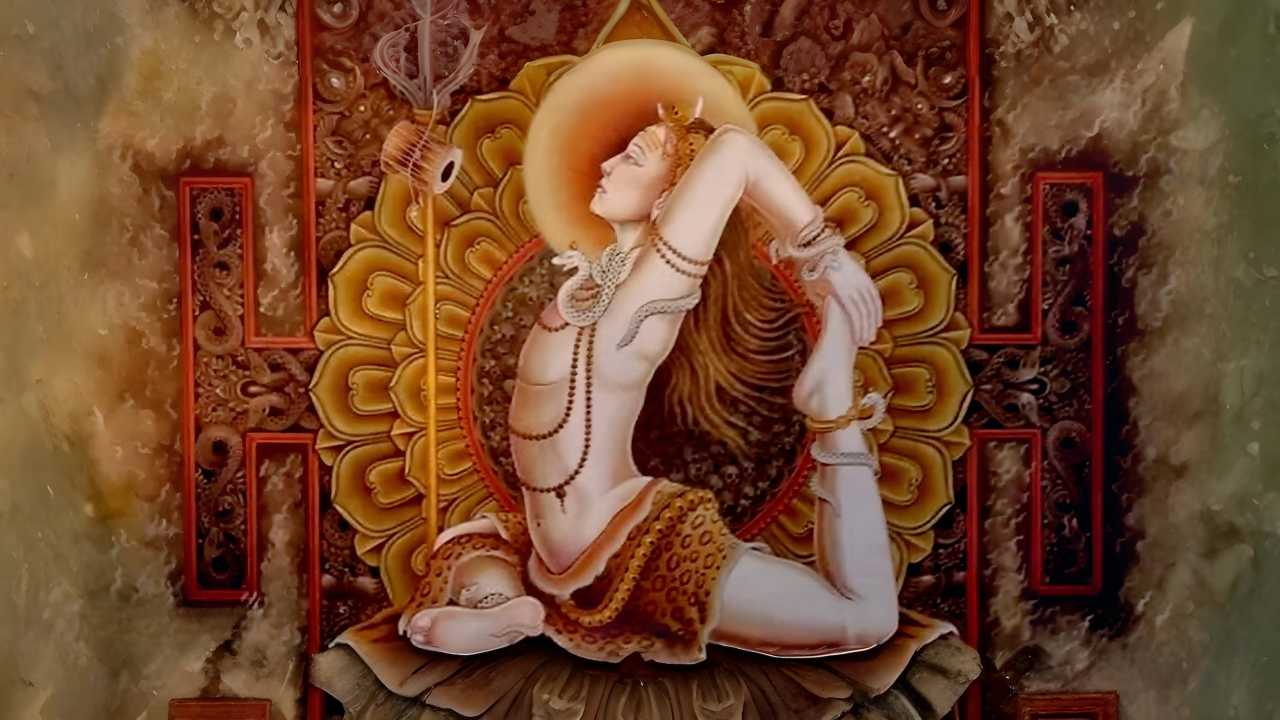
This International Day of Yoga 2025, take a moment to explore what yoga truly means. Beyond fitness trends, yoga is the inner science of consciousness, first expounded by Shiva, the Adiyogi. Read on as revered master Anandmurti Gurumaa delves into its essence, inspiring us to walk the path with fervour and right understanding. This article is drawn from “Path of Yoga,” a discourse given by the Master on the same occasion in 2015.
What Is Yoga?
The word yog means to yoke, to join. Joining what? As there is a consciousness in you, there is consciousness in every cell, in every molecule and atom of the universe. Conjoining this micro-consciousness with the macro-consciousness is yoga.
Long ago, well before humans started writing, our Rishis (sages of yore) had understood and explored the deeper recesses of the mind. They had in-depth knowledge of the body, mind, intellect, and the supreme consciousness. They were scientists who understood by experience the intricacies of this inner world—the absolute truth, Brahman.
Let’s explore this intricate science so that you can understand what yoga is. As Indians, we are so proud that yoga was explored and experimented with in India, and yet many of us don't know what yoga truly is, which is a shame.
Heritage and Tradition of Yoga
Many people think Rishi Patanjali is the father of yoga. But understand that the first Guru of yoga was not Patanjali. The first Guru who gave us yoga in all its intricacies was none other than Shiva, the Adiyogi—adi meaning the “first”. He gave this knowledge to his seven disciples, the Saptarishis, who then propagated it in different places on Earth. Nothing was written. The Guru, Adiyogi, spoke, and the seven sages listened. The knowledge they heard went deep into their intellect without any error.
For thousands of years, this knowledge was transmitted orally. This country didn’t give birth to fools; it produced intellectual giants with sharp memories. The Guru would speak, and the disciple would listen—without saying, “What did you say? I have forgotten, can you repeat?”
The Saptarishis were adepts who had mastered and purified their minds and were in great devotion to Shiva; they became the first ones to receive this.
Patanjali's Yoga Sutras
Until 2500 years ago, the knowledge of yoga was written down in different places in all four Vedas (in the 108 Upanishads) and scriptures such as the Bhagavad Gita, but it was all scattered. So, 2500 years ago, Rishi Patanjali collected this scattered information about yoga and codified it into aphorisms (sutras), the Yoga Sutras.
Note that Patanjali was not the Rishi’s name; it was more like a title—such as “Doctor” is used to denote a physician. One who has become a scientist of this inner world by practising great austerities is called Patanjali.
The first sutra says, “Atha yoga anushāsanam”—“Here the discipline of yoga.” With great love and respect, I bow to the Master who gave us this codified information about yoga, so that today we can understand, learn and practise it.
Yoga—Beyond Cultural Distinctions
Whatever your religion, caste, nationality, or language, every human being needs a healthy body and mind, and a sharp intellect.
The science of yoga was explored and practised for thousands of years in India, where most practitioners have been people following the Hindu way of life—but it’s not only meant for Hindus.
Without being caught up in labels, anyone longing to know the highest Truth can become a seeker. Those who wish to understand their body and mind, and make them healthy and integrated, can become a student and practitioner of yoga.
Yoga begins with the teacher. If you don't have a teacher, you can’t practise yoga. So we need a teacher, we need the wish to understand, and then the journey begins.
What Is Not Yoga?
To understand what yoga is, it will be good to understand what it isn’t. Firstly, it’s not an exercise, contrary to what most people think. It’s not about building muscles. If you want six-pack abs, don't do yoga; you won't get them.
It also isn’t a form of acrobatics, requiring flexibility and showmanship. In the circus, you see people who can contort their bodies, twisting and twirling their limbs as if there is no bone in their body—that is not yoga. It's a fabulous thing to have such command over your body, making you a great gymnast and performer, but I won’t call you a yogi.
Yoga Is Not a Therapy
Next, yoga is not meant to heal your body; however, healing may happen in the process. This fad has been happening recently—people say, “I’m doing yoga because that can cure my blood pressure,” “I want to lose weight—I do yoga,” “I have diabetes, that’s why I do yoga.” So they are using this to cure their diseases or reduce weight.
When you do asana and pranayama, the body may get healed as a byproduct, and as the metabolism gets balanced, you will lose any extra weight—it’s a bonus. Yet, that is not the real objective of yoga.
And finally, yoga is not meant to boost your ego! “See here, I can do Shirshasana and go into Chakrasana from the standing posture”—a big ego booster. If those who have grand egos and wish to inflate them further use yoga as a tool, it would be like driving a supersonic jet on the roads of Delhi. Would it be logical or stupid? So, boosting the ego shouldn’t be your objective.
Having cleared common misconceptions, let’s look into the factors that make a true practitioner.
Who Can Practise Yoga?
A Verse in Hatha Yoga Pradipika says:
brahmacārī mitāhārī tyāgī yoga-parāyaṇaḥ ।
abdād ūrdhvaṁ bhavet siddho nātra kāryā vicāraṇā ॥
“One who is a brahmachari, takes moderate and pure food, is regular and intent on yoga and renounces attachment to sensual experience, without doubt reaches perfection soon.”
Let’s understand its meaning, word by word.
Here, the first attribute of an aspirant is brahmachari. It doesn't necessarily mean remaining celibate all the time—it means being loyal to one’s partner and having command and restraint on one’s senses.
Mitahari denotes eating less and with discipline, not like an animal. According to the Bhagavad Gita, those who eat too much can’t become a yogi, nor those who eat too little. There has to be a middle way. Eat appropriately to satisfy your body’s needs.
To understand what, when, and how much to eat, knowledge of Ayurveda is important. One should take food in accordance with the season (rtu) and bodily constitution (prakrti). Our constitution is decided by the innate balance of the three doshas—vata, pitta, and kapha. After analysing your body, an Ayurvedic physician can help you understand what to eat, how to eat, and how much to eat. With wrong habits, your food becomes poison and a cause for diseases, as well as too much commotion in your mind. Therefore, mitahari—one should eat less and wisely.
Tyagi doesn't mean to leave everything and live on the banks of the Ganga, no. Tyagi signifies using material commodities as needed, without hoarding or storing things in our closets out of greed. Crazy about fashion, having dozens of pairs and yet the woman has to get a new one for her anniversary!
Who can practice yoga? One who disciplines their wants and needs, restraining greed, is a tyagi. Many people say, “We are householders, how can we practice yoga? Mitahari, Tyagi—you have to become a recluse and sit in a cave.” That perception is wrong. Whether you’re a householder or a sannyasi, these words apply to everyone.
Discipline: A Must for a Yoga Aspirant!
Yoga means to be in discipline. Discipline consists of a set of rules that a Master gives to the disciple. It’s not about how much you’ve heard of yoga, it’s all about how much you practise. If you don't follow the discipline, you can’t be called a disciple.
If you say, “I wish to walk the path of yoga,” then please don't just read about yoga—practise it. It’s not a mere theory. Can you learn swimming by theory, minus the pool? No, you need a pool and a good instructor. Then you enter the pool and practise. Similarly, to dive into yoga, one needs discipline, and those who follow it are called disciples.
Who’s a True Yoga Teacher?
These days, there are so many self-proclaimed yoga teachers. I recall one of my great yogi friends, Swami Bua Ji. Once, I was sitting with him in his New York apartment when a couple walked in. After doing their pranam, the yogi asked, “What do you do?” The lady replied, “I'm a yoga teacher.” And this 122-year-old Yogi quipped, “Aha, I am still a student. You are a teacher—what a good fortune, I am meeting a teacher today!”
Who can teach yoga? None other than a yogi can really teach yoga. And who is a yogi? One who has attained the state of nirbeej samadhi (total emancipation of the mind) is a yogi. As Patanjali's second sutra, “yogaschitta-vrtti-nirodhah,” defines: in the highest state, no fluctuations arise in the yogi’s mind. When all the seeds of desires and mental afflictions are burned, that state is called nirbeej samadhi. Such a hallowed being is fit to impart yoga to a disciple.
One Goal, Many Paths
As we have established, uniting the mind with the Lord—the supreme consciousness—is called yoga. This can be achieved through a variety of paths delineated by our sages, such as raja yoga (also called ashtanga yoga—the “royal” path of meditation), bhakti yoga (yoga of devotion), gyana yoga (path of self-inquiry), laya yoga and hatha yoga.
As you don’t know which is best suited to you, your teacher or Master will choose the correct path for you.
Note: The upcoming articles in this year’s yoga special give insights into the eight-fold path outlined by Patanjali in his Yoga Sutras. It offers a methodical process that helps seekers overcome the maladies of the mind, make it one-pointed and experience the total absorption known as samadhi. The first two rungs in this ladder, called yama and niyama, are explained here.
The Master’s comprehensive commentary on the Yoga Sutras is available as a video series, in book form, and digitally via the Amrit Varsha App.







